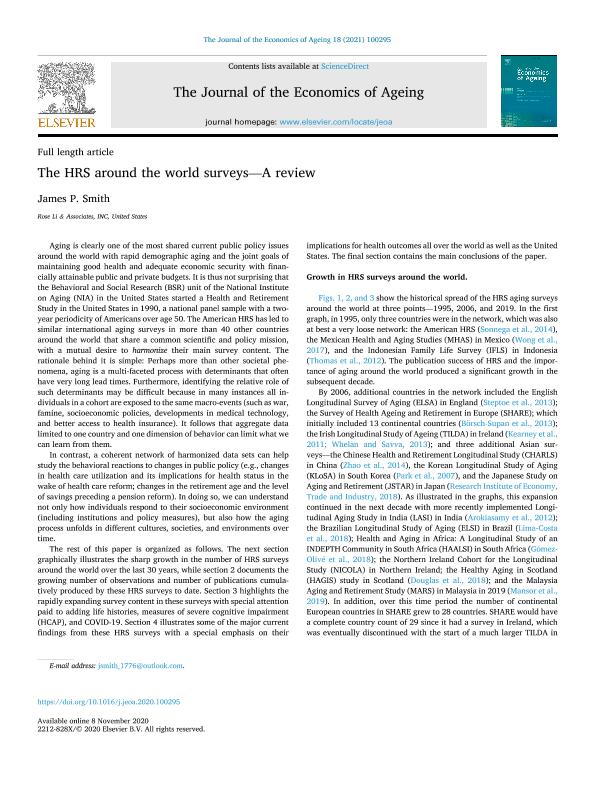The HRS around the world surveys. A review

Contenido multimedia no disponible por derechos de autor o por acceso restringido. Contacte con la institución para más información.
| Tag | 1 | 2 | Valor |
|---|---|---|---|
| LDR | 00000cab a2200000 4500 | ||
| 001 | MAP20210010330 | ||
| 003 | MAP | ||
| 005 | 20210405201503.0 | ||
| 008 | 210329e20210201esp|||p |0|||b|spa d | ||
| 040 | $aMAP$bspa$dMAP | ||
| 084 | $a345 | ||
| 100 | 1 | $0MAPA20210005268$aSmith, James P. | |
| 245 | 1 | 4 | $aThe HRS around the world surveys. A review$cJames P. Smith |
| 520 | $aAging is clearly one of the most shared current public policy issues around the world with rapid demographic aging and the joint goals of maintaining good health and adequate economic security with financially attainable public and private budgets. It is thus not surprising that the Behavioral and Social Research (BSR) unit of the National Institute on Aging (NIA) in the United States started a Health and Retirement Study in the United States in 1990, a national panel sample with a twoyear periodicity of Americans over age 50. The American HRS has led to similar international aging surveys in more than 40 other countries around the world that share a common scientific and policy mission, with a mutual desire to harmonize their main survey content. The rationale behind it is simple: Perhaps more than other societal phenomena, aging is a multi-faceted process with determinants that often have very long lead times. Furthermore, identifying the relative role of such determinants may be difficult because in many instances all individuals in a cohort are exposed to the same macro-events (such as war, famine, socioeconomic policies, developments in medical technology, and better access to health insurance). It follows that aggregate data limited to one country and one dimension of behavior can limit what we can learn from them. | ||
| 650 | 4 | $0MAPA20080552114$aPensiones | |
| 650 | 4 | $0MAPA20080573867$aSeguro de salud | |
| 650 | 4 | $0MAPA20080568771$aEnvejecimiento | |
| 651 | 1 | $0MAPA20080638337$aEstados Unidos | |
| 773 | 0 | $wMAP20210010194$tThe Journal of the economics of ageing $dOxford : Elsevier ScienceDirect, 2021-$g01/02/2021 Volumen 18 - 2021 , 9 p. |

